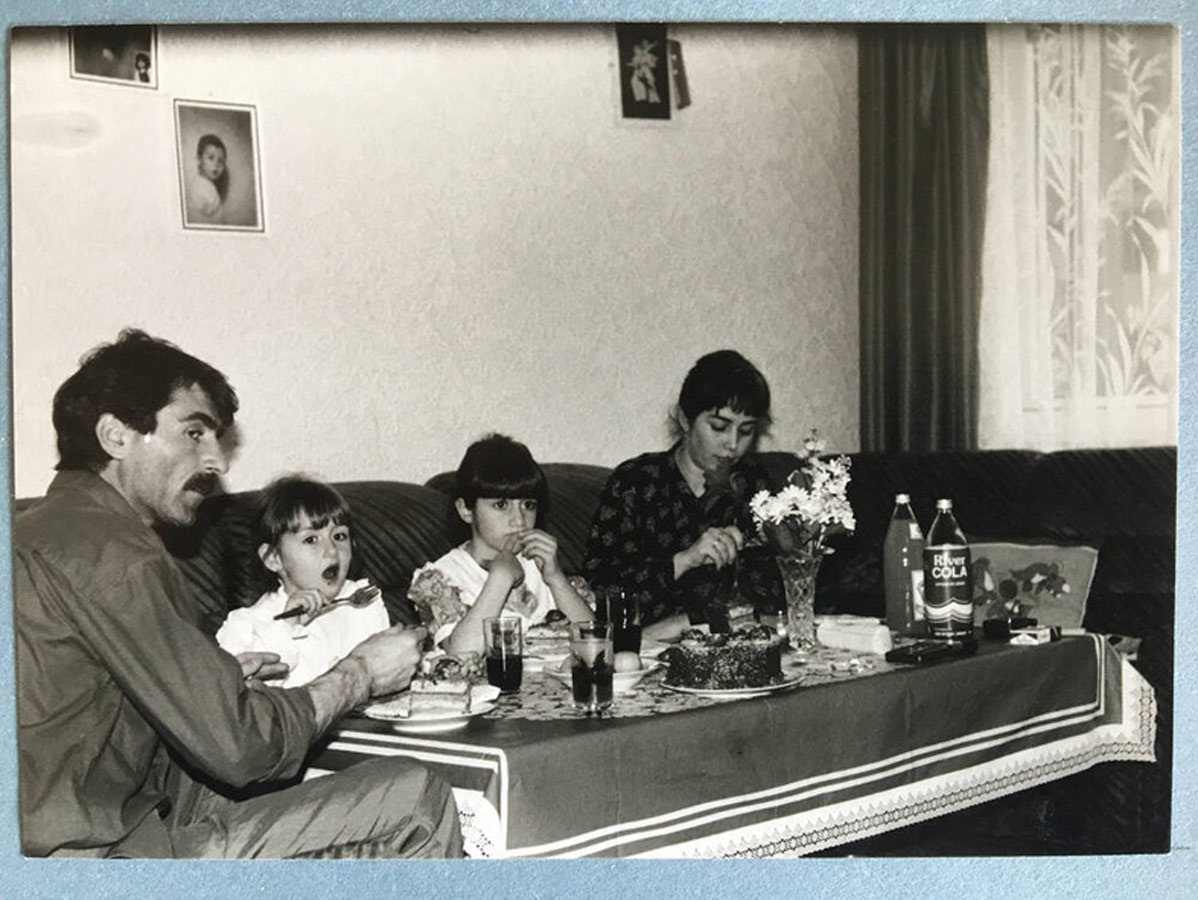
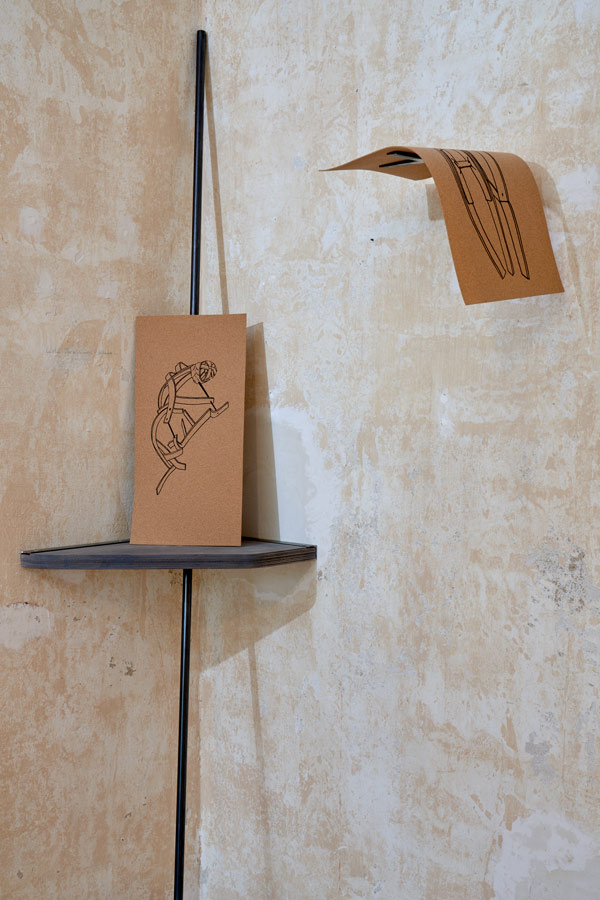
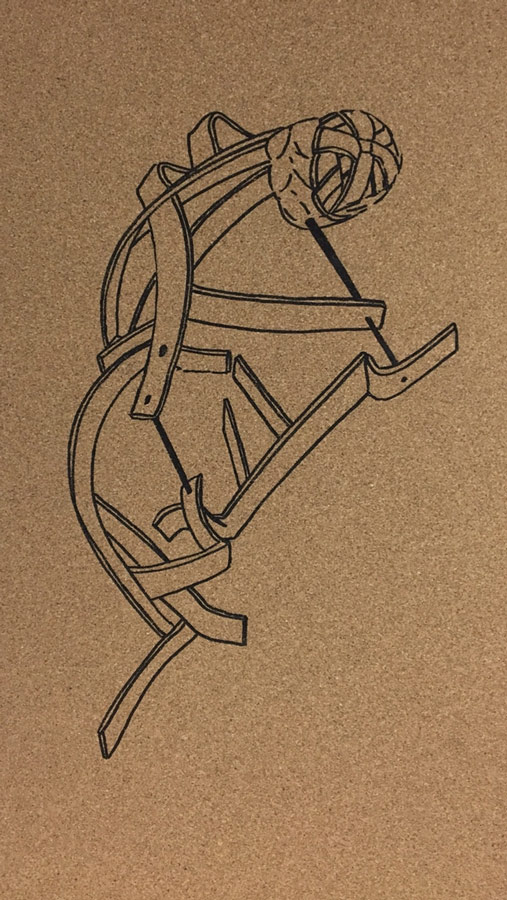
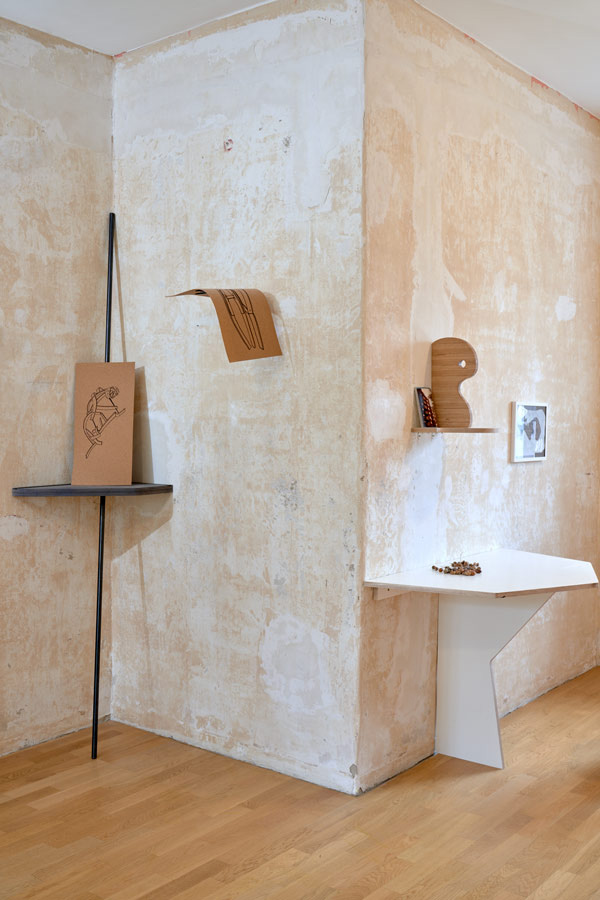
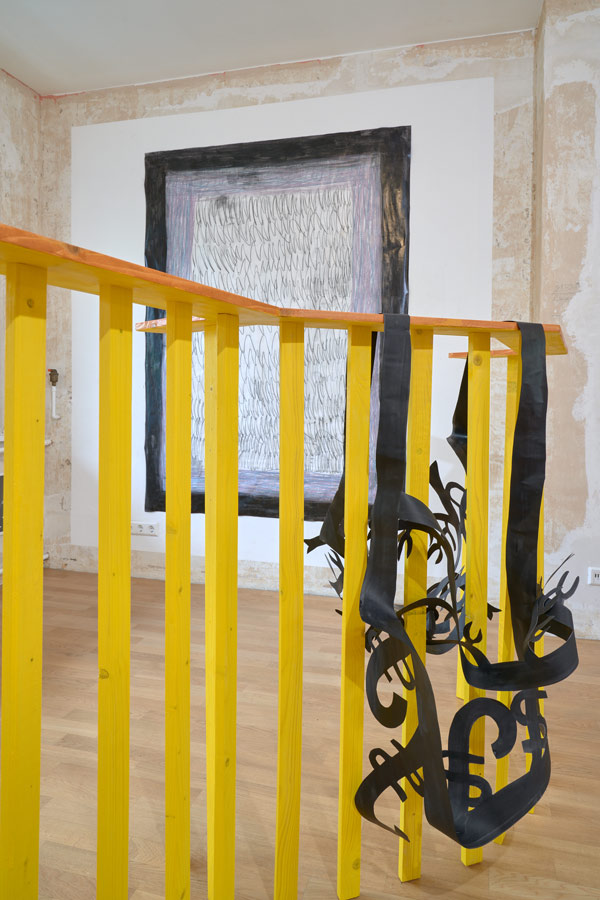
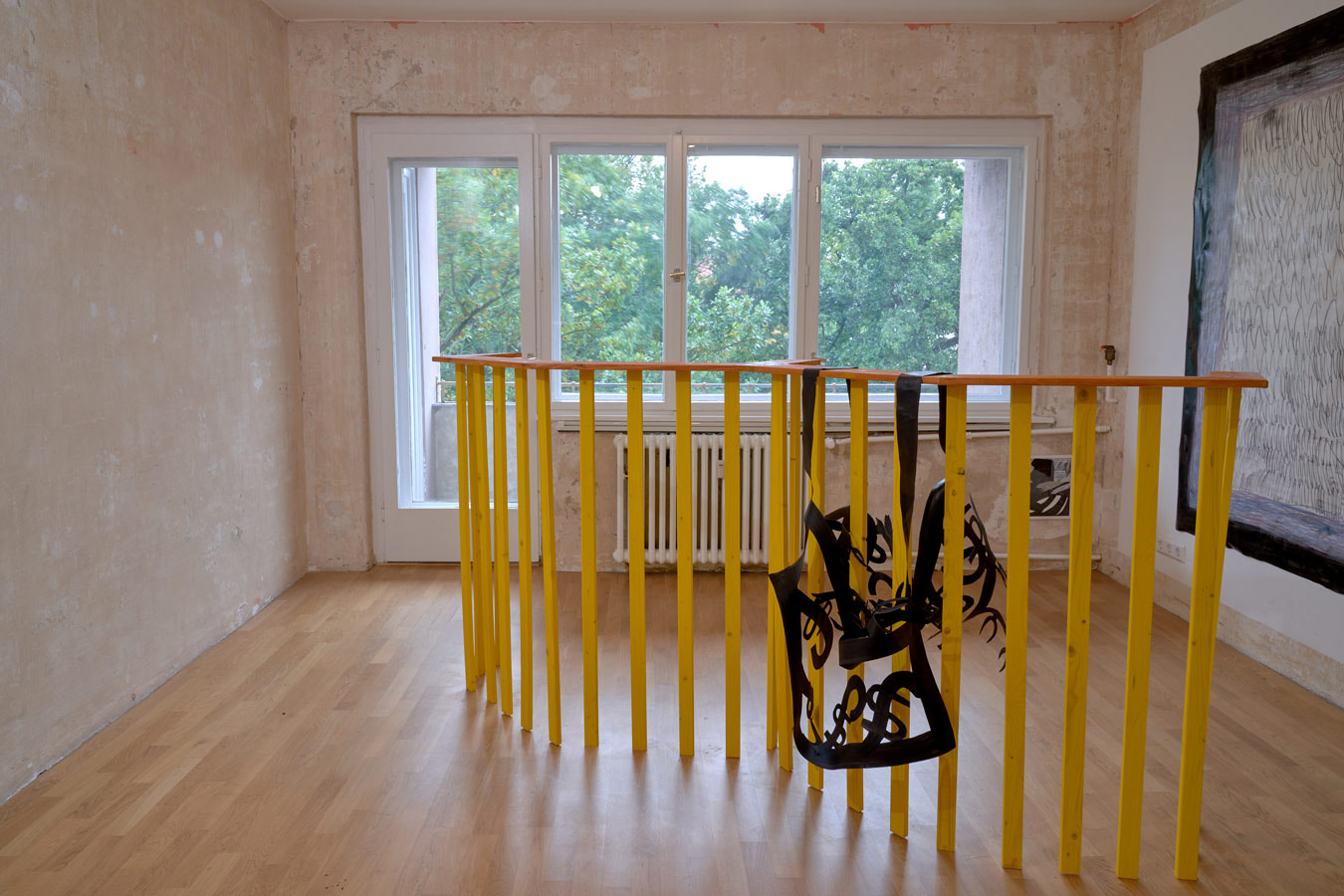
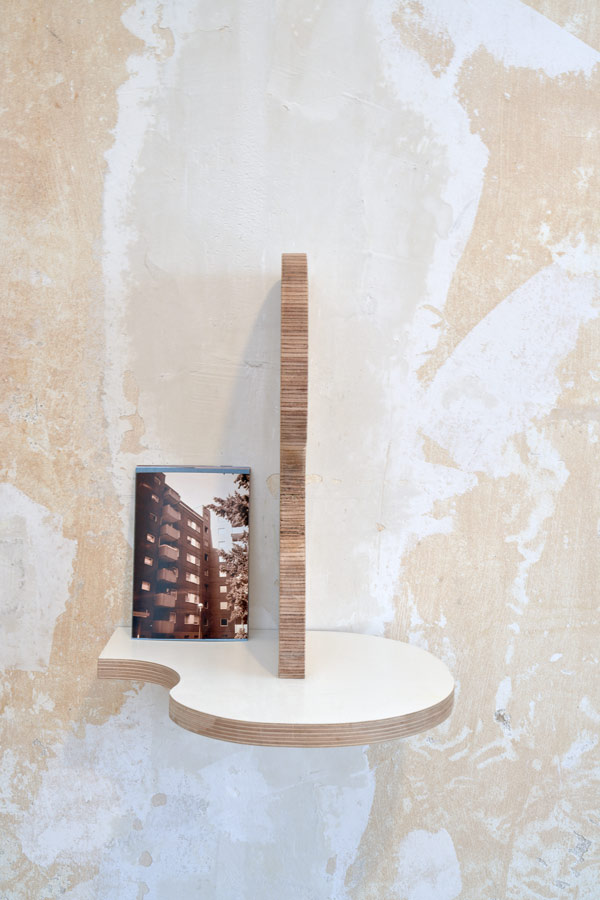
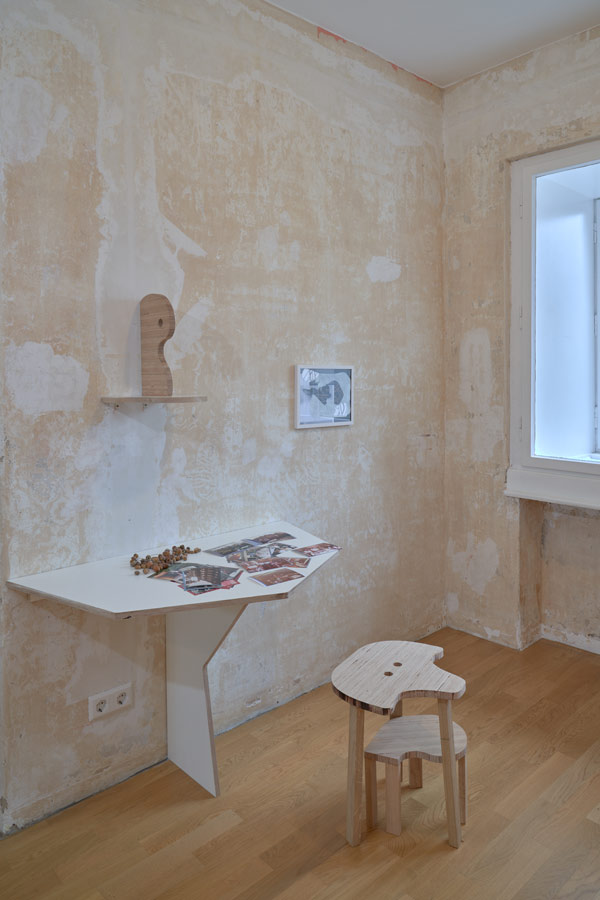
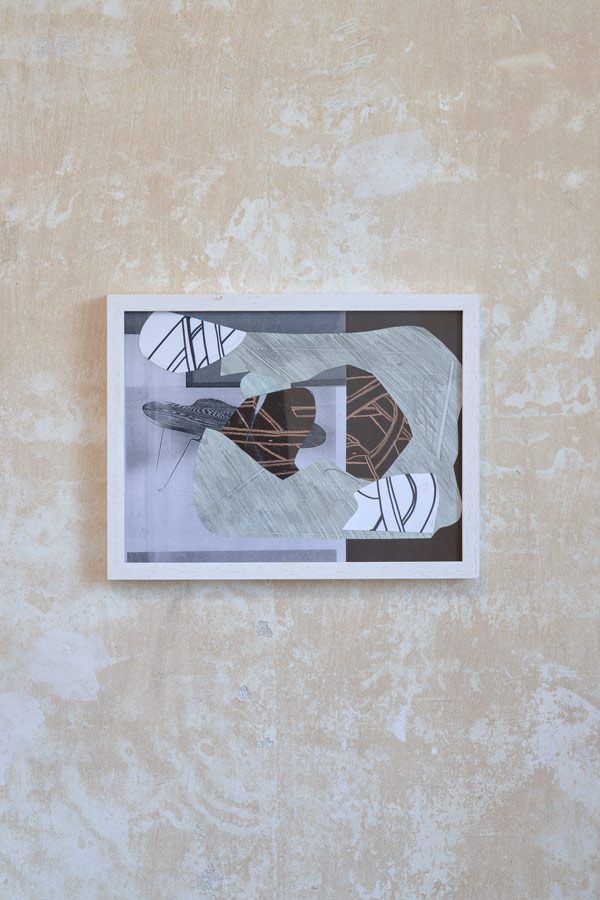
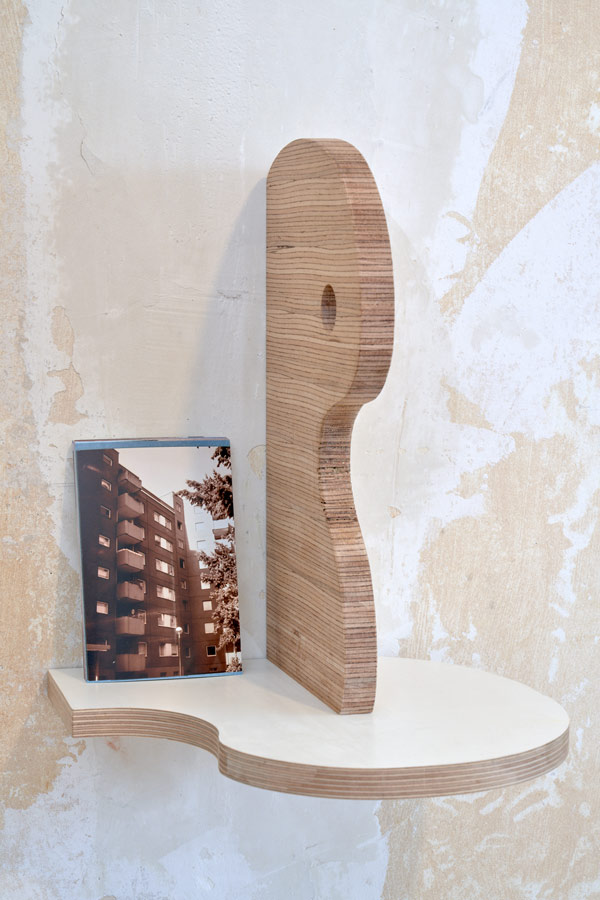
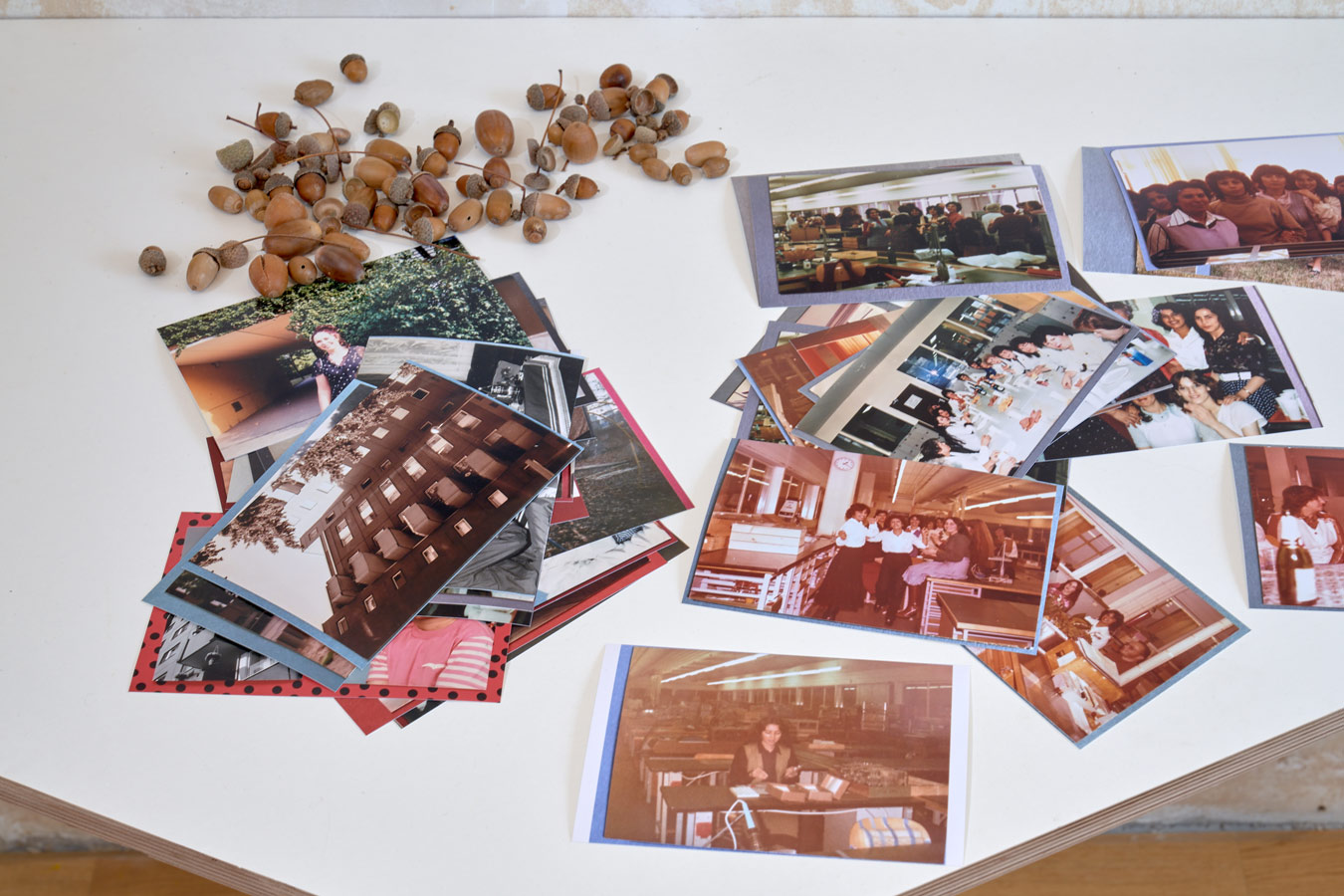
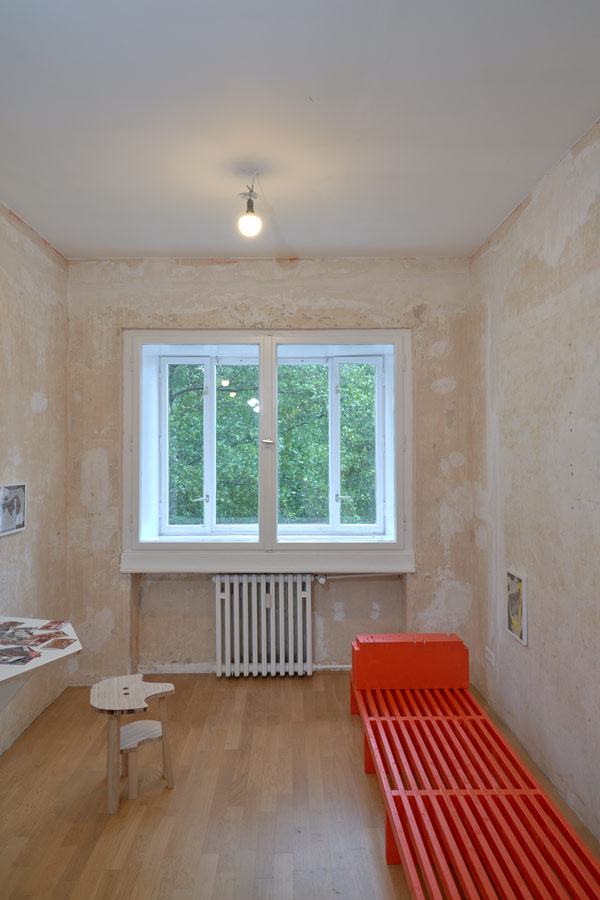
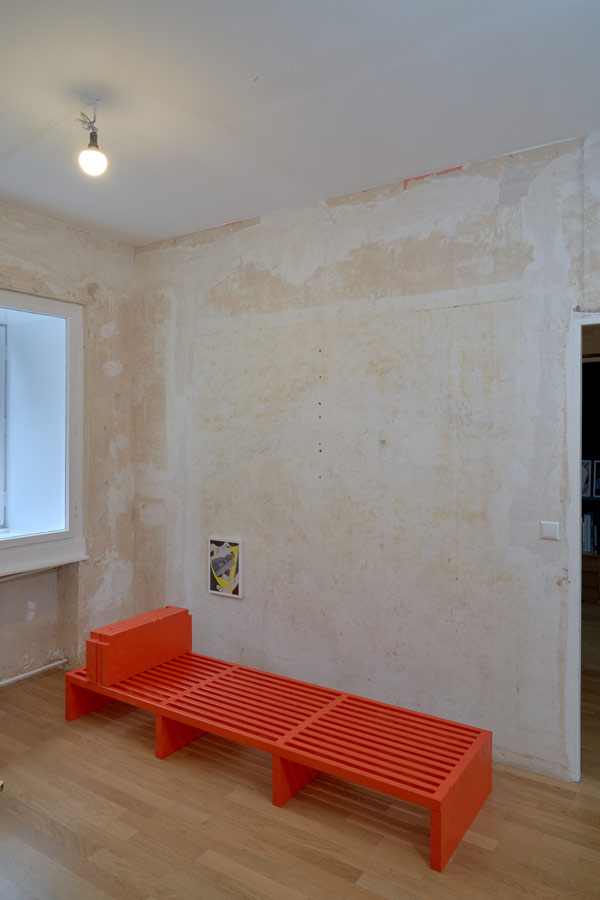
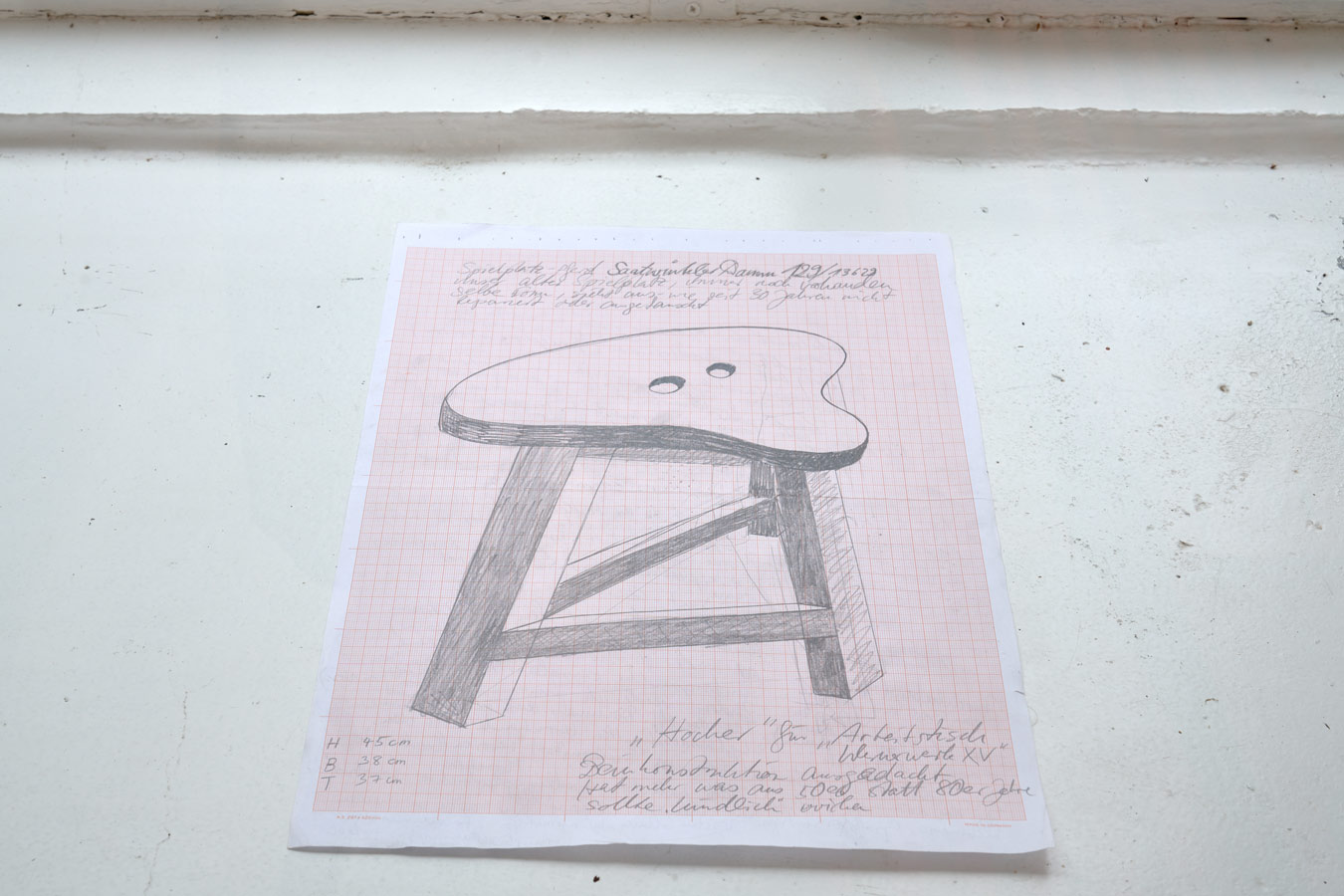
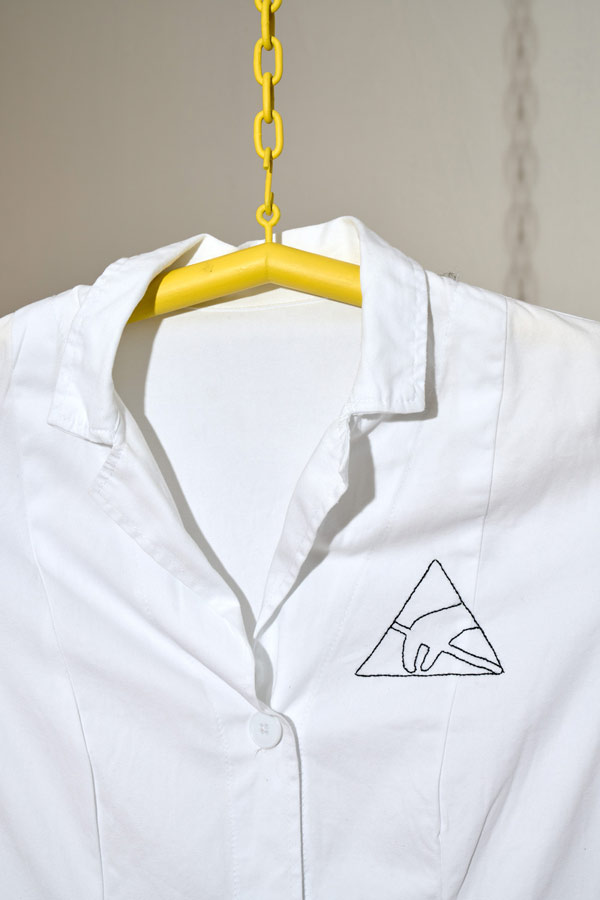
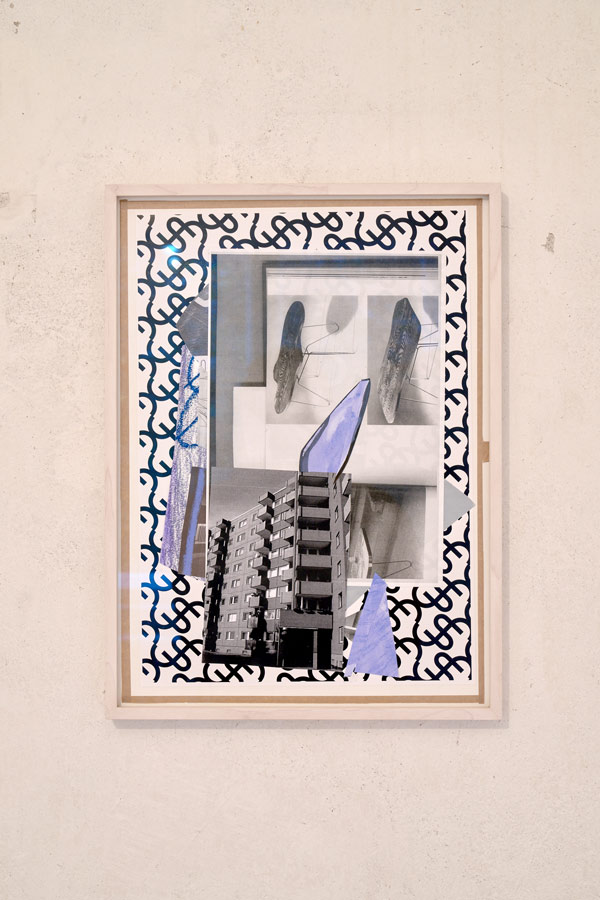
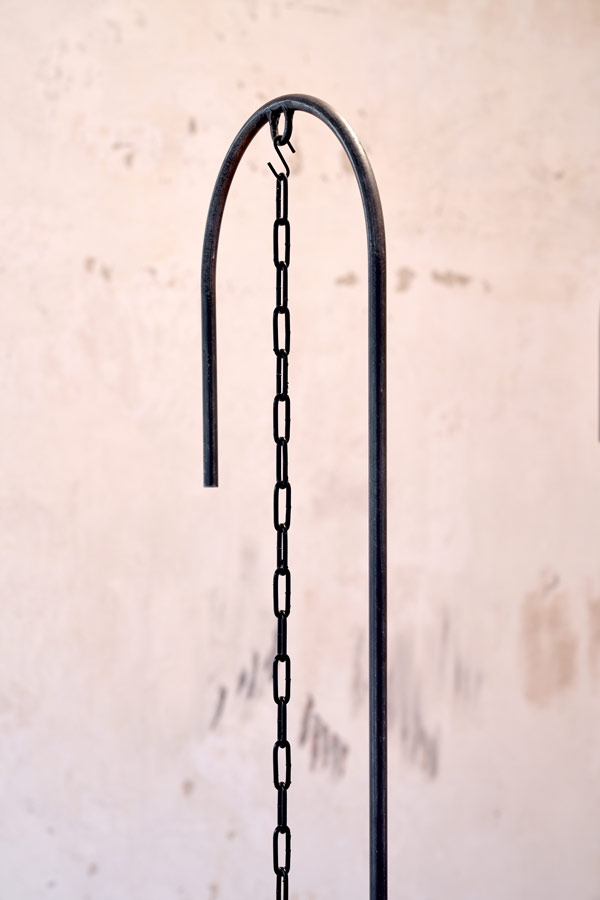
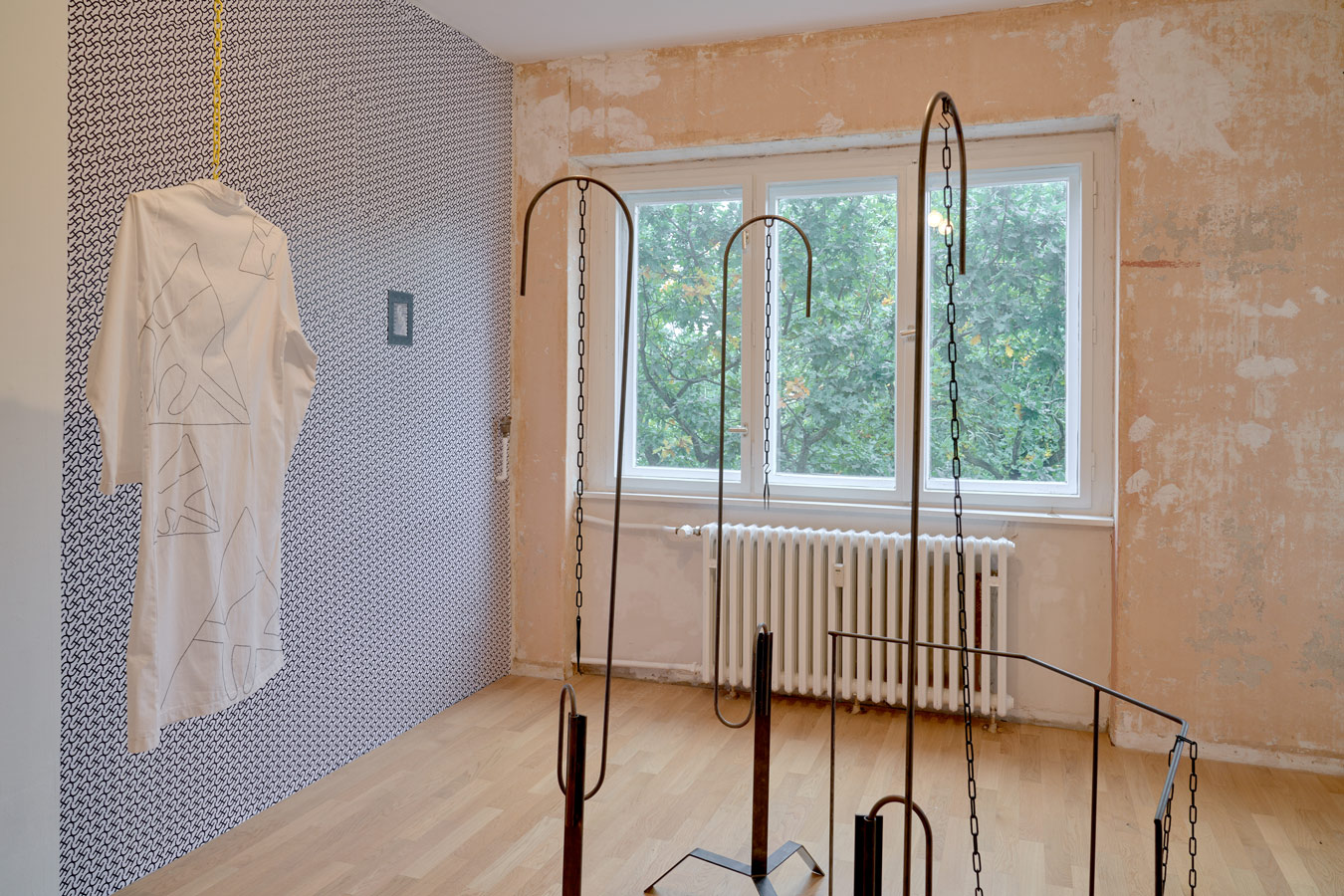
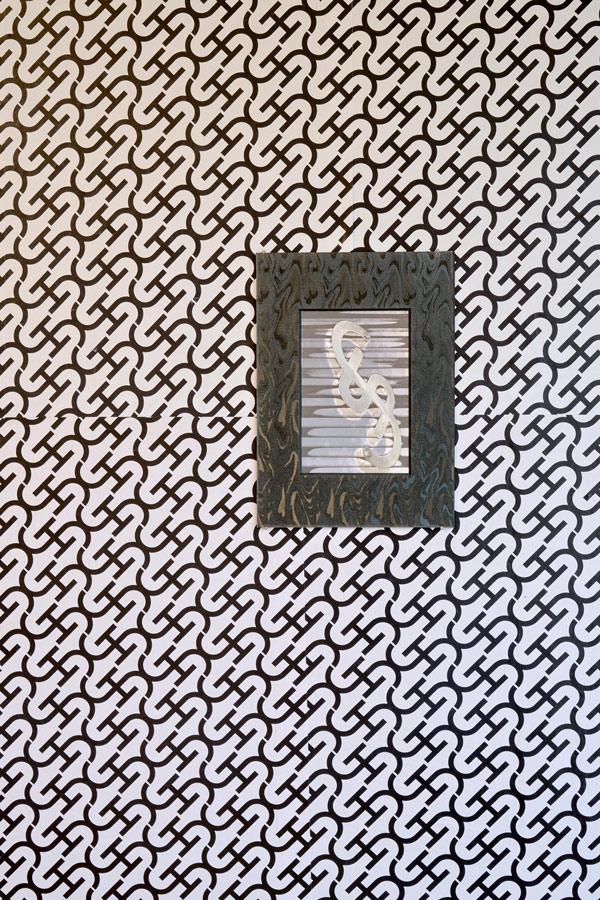

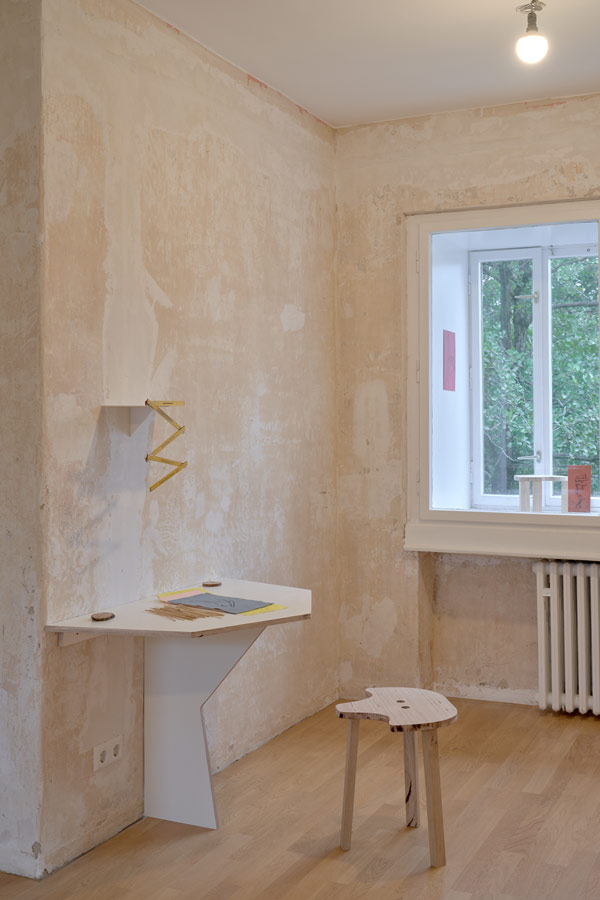
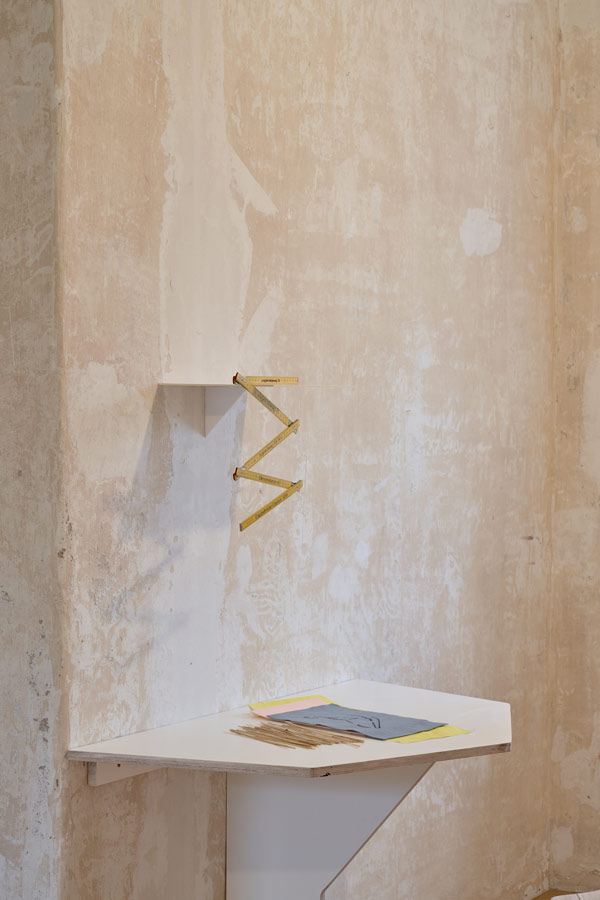
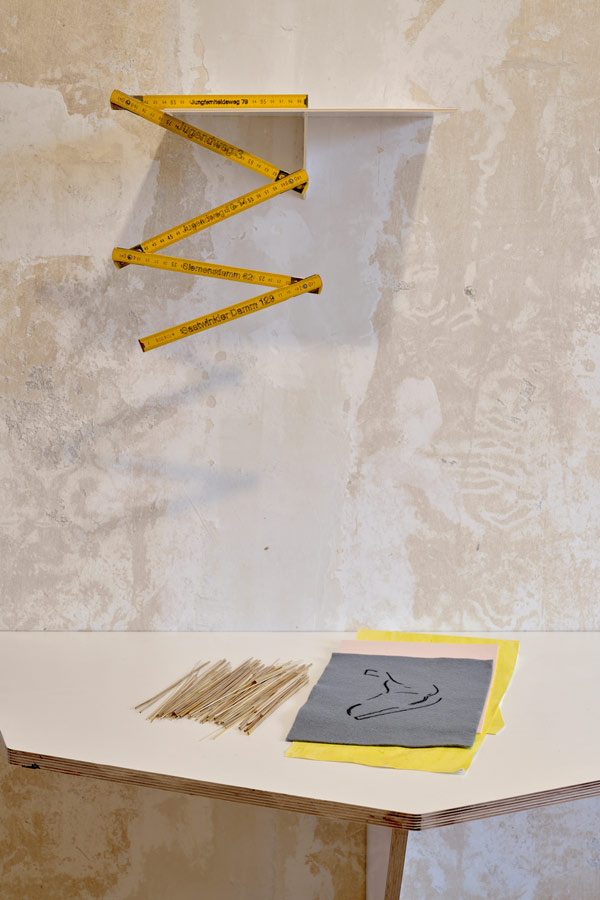
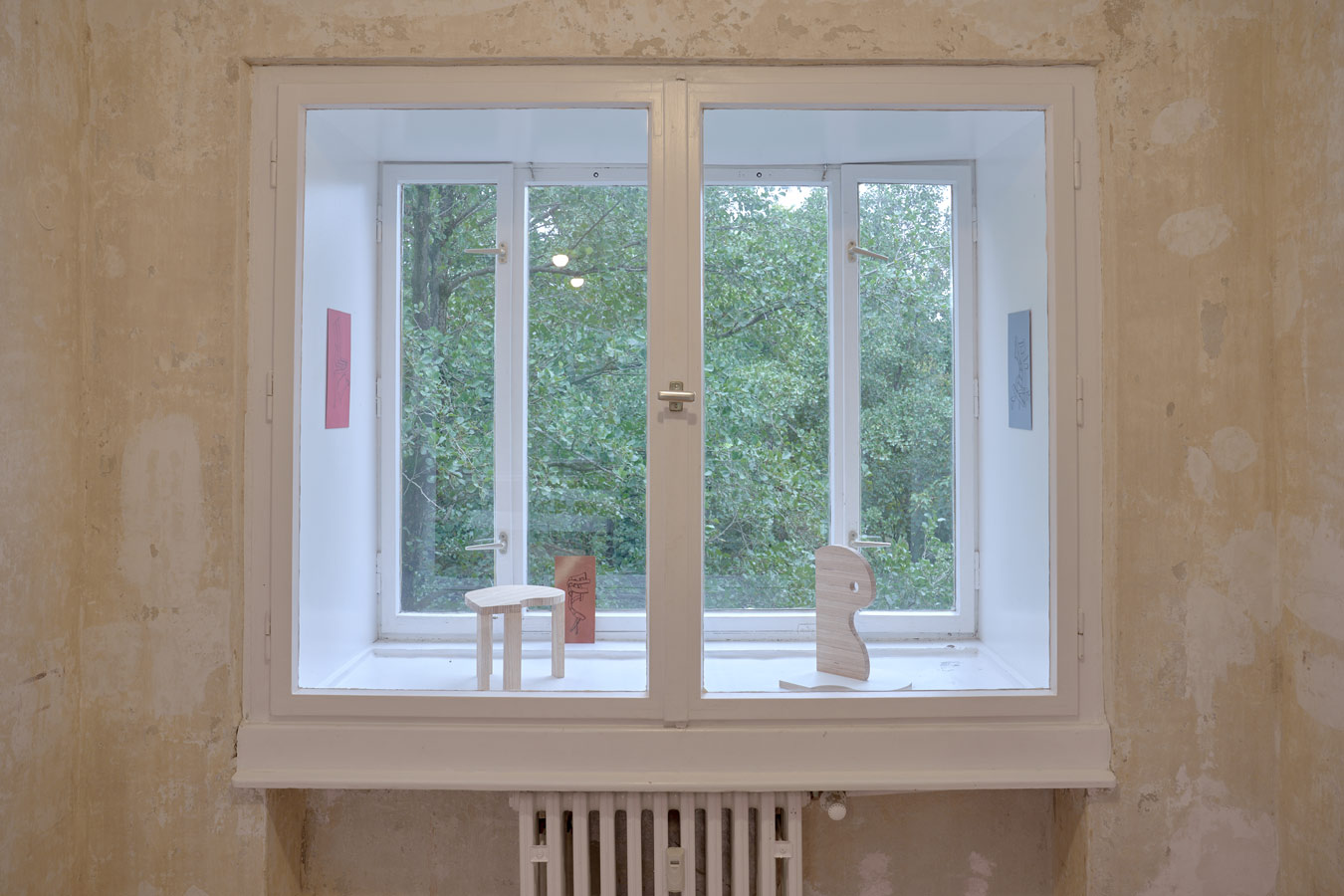
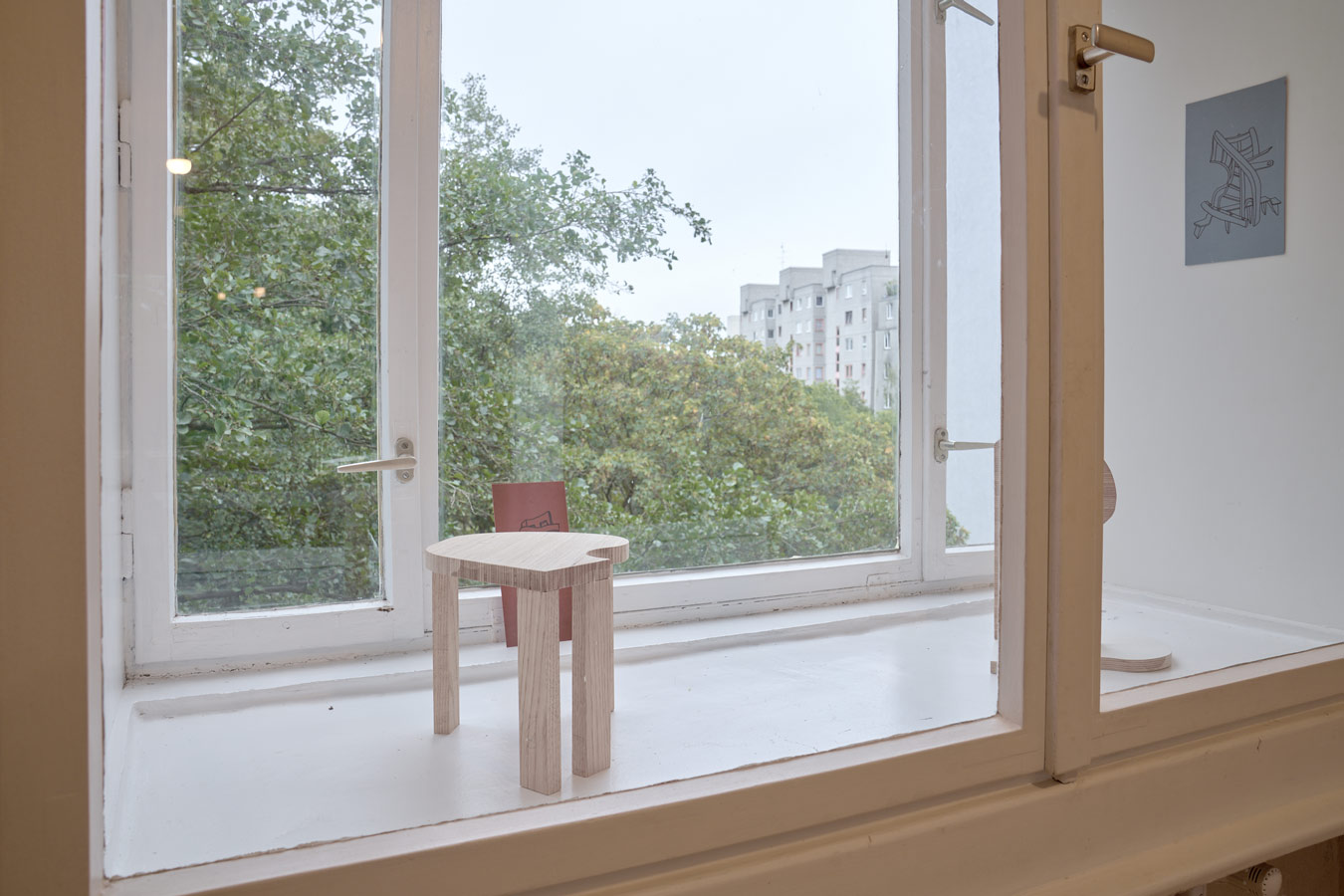
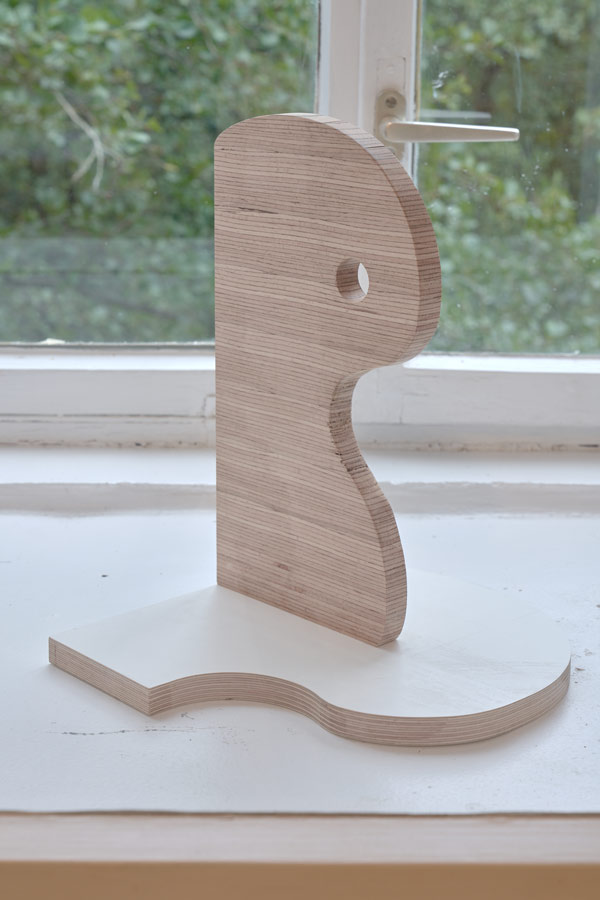
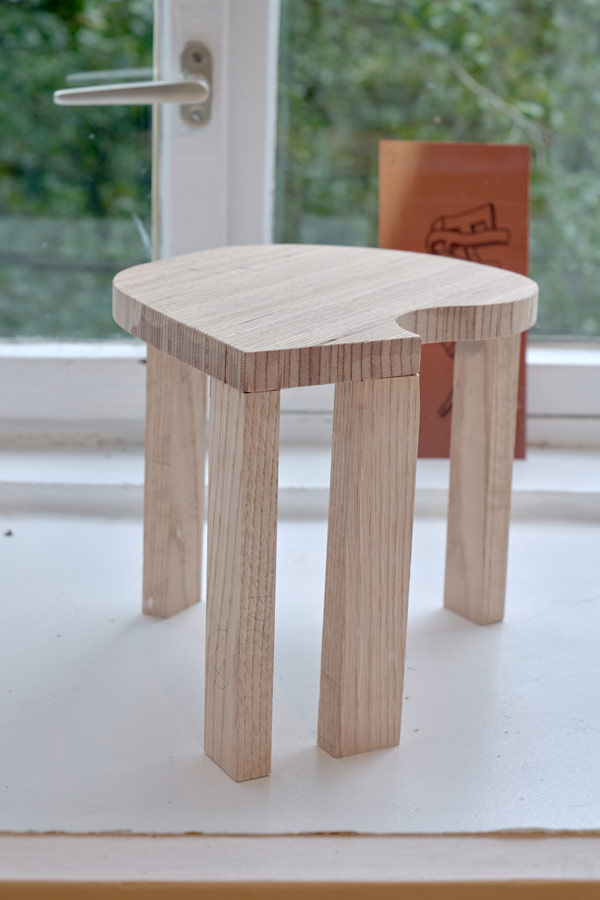
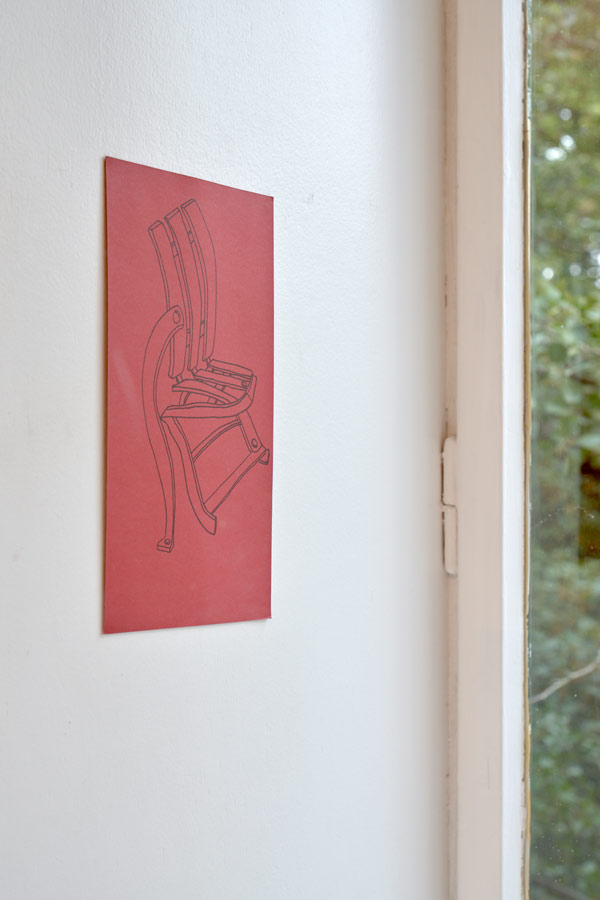
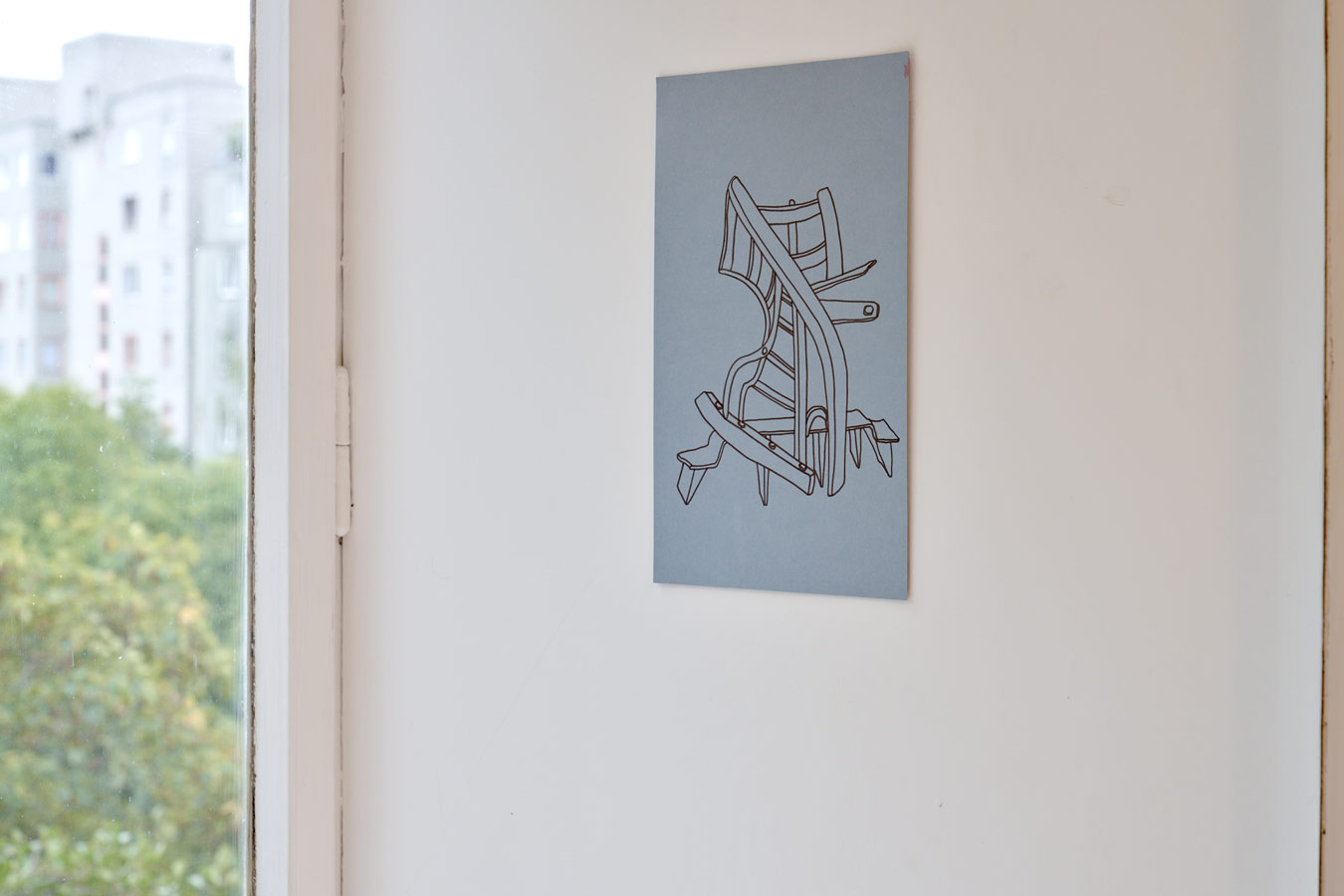
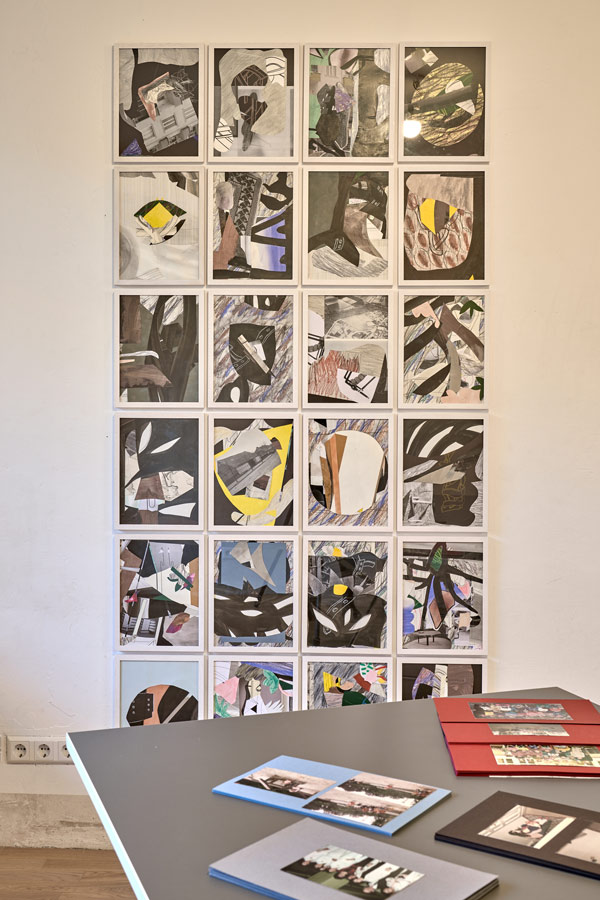
neues bauen 13629
Soloshow, Scharaun, Berlin-Siemensstadt
03. Oktober — 14. November 2020
Ausstellung : 03. Oktober - 14. November 2020
Öffnungszeiten: Samstags 12h - 18h
nur nach Vereinbarung unter info@scharaun.de
Scharaun Jungfernheideweg 4
13629 Berlin-Siemensstadt
U-Bhf Siemensdamm
info@scharaun.de
[DE] Als älteste Tochter türkischer Einwanderer ist Ahu Dural in Siemensstadt, einer Werksiedlung der Berliner Moderne, aufgewachsen. Durch die Arbeit im Gruppen– und Einzelakkord (Durals Mutter montierte Microchips für Siemens-Geräte im Wernerwerk XV) ermöglichten die Eltern ihr und ihren beiden Schwestern Ausbildung und Studium – und somit die Option auf ein Leben jenseits der Siemens-Produktionsstätten.
Die Ausstellung “neues bauen 13629” verbindet Durals familiäre Geschichte mit ihrer eigenen künstlerischen Reflektion zu einem narrativen Strang. Von den Orten ihrer Sozialisation ausgehend (Wohnung, Schule, Kita, Hort), nimmt Ahu Dural das damalige Konzept der Großsiedlung “Arbeiten, Wohnen, Erziehen und Erholen” als Ausgangspunkt künstlerischer Neuinterpretation. Welche Relevanz hat der ursprüngliche Gedanke des “neuen bauens” in einem städtischen Raum wie Siemensstadt für damals und heute? Was ist und war für die Künstlerin das Prägende an Siemensstadt?
neues bauen 13629
In ihrer Einzelausstellung "neues bauen 13269" im Projektraum Scharaun unternimmt Ahu Dural (Berlin * 1984) eine künstlerische Auseinandersetzung mit dem Umfeld ihrer Kindheit. Der Projektraum Scharaun befindet sich im 3. Stock eines von Hans Scharoun für Siemensstadt entworfenen und 1930 fertiggestellten Wohnblocks. Als älteste Tochter türkischer Einwanderer wuchs Dural in der Siemensstadt auf, mit ihren renommierten Berliner Siedlungen der Moderne, die etwa ab den 1910er Jahren für die Arbeitnehmer der Siemens-Werke gebaut wurden.
Die Künstlerin verbindet ihre Biografie mit den architektonisch-funktionalen Elementen des Stadtteils. Sie untersucht das modernistische „All in one place“ Konzept („Arbeit, Wohnraum, Bildung und Erholung“) eingebettet in die Umgebung, in der sie aufgewachsen ist, und nimmt es als Ausgangspunkt für persönliche Reflexionen.
Sie bedient sich der Linien, Formen, Farben und Symbole der Siemensstadt für die Raumkunst in der Ausstellung. Details und Fragmente aus Fotos und Zeichnungen (beispielsweise ihres Kindergartens oder des Plattenbaus, in dem die Künstlerin mit ihrer Familie lebte) tauchen ein in ihre Skulpturen und großformatige Collagen. Weitere Elemente, wie die frühen Siemens-Firmenlogos oder der pferdeförmige Sitz vom Spielplatz der Siedlung am Saatwinkler Damm, werden in einer abstrakten und grafischen Sprache in Bildfläche und Möbelobjekt eingearbeitet.
Bezüge zu den Siemens-Werken der 1980er Jahre dominieren die Kunstwerke, ebenso wie die Erinnerungen an Durals Kindheit und die architektonische und soziale Entwicklung des Stadtteils. Ihre Mutter, Özler Dural, arbeitete von 1980 bis 1995 bei Siemens als Bestückerin für Leiterplatten im Akkord. Der Ertrag dieser repetitiven Handarbeit ermöglichte Dural und ihren Schwestern Bildung, Ausbildung und sozialen Aufstieg. Die repetitiven Aspekte der mütterlichen Lohnarbeit klingen in den Collagen und Skulpturen der Künstlerin nach: Sie setzt sich quasi körperlich in unterschiedlichen Materialien und Dimensionen mit der Fabrikarbeit auseinander, mit ihren sich wiederholenden Gesten, Bewegungen und Mustern.
Aber es ist vor allem eine weibliche Perspektive, die auch in "neues bauen 13629" Durals bisher persönlichster Ausstellung, zum Vorschein kommt. Viele Werke spielen an auf die weiblichen Einflüsse in ihrem Leben - angefangen bei ihrer Mutter. 15 Years eine Auswahl von Fotos aus dem Duralschen Familienalbum, zeigt die Mutter bei der Arbeit im Wernerwerk XV, Geburtstagen, Jubiläen, Abschiedsfeiern. Jene Anlässe, die damals wichtig genug erschienen, um auf Zelluloid festgehalten zu werden.
Die Mutter ist meist von Kolleginnen umgeben, da die präzisen feinmotorischen Aufgaben (wie beispielsweise der Zusammenbau von Mikrochips) fast ausschließlich von Frauen erledigt wurden. Während ihre Mutter ihr Geschichten aus 15 Years erzählte, „kleidete“ Dural die Erzählerin performativ in einen neuen Siemens-Arbeitskittel: Eine bestickte Neuinterpretation. Als Kind wurde Ahu Dural stark geprägt durch die produktive Energie Ihrer Mutter. Weibliche Vorbildfiguren stehen auch im Zentrum ihrer Interessen: Feministische kritische Theorie, Architektinnen und Designerinnen der Moderne und Postmoderne. Mehrere Skulpturen in der Ausstellung sind inspiriert von bzw. Hommagen an weibliche Kreative wie Eileen Grey, Charlotte Perriand oder Louise Bourgeois. Ein Objekt, das einer Grey‘schen Innenleuchte ähnelt, wird durch Durals abstrakte Neuinterpretation beinahe in ein zweidimensionales Objekt verwandelt und erinnert an die Fähigkeit von Grey, ihren funktionalen Industriedesigns eine grafische Dimension zu verleihen.
Eine weitere Arbeit in Form einer Bank aus langen Holzstücken erinnert an Perriands japanischen Stil. Zugleich nimmt das Werk biografische Elemente auf, wie die kräftige orange- rötliche Farbe der Bänke des Kindergartens oder des U-Bahnhofs Siemensdamm. Lose platzierte Eicheln aus der Parkanlage in Siemensstadt liegen auf der Oberseite eines funktionalen weißen Schreibtisches. Dieselbe geometrische Form, die Dural als „die Form meines Unterbewusstseins“ definiert, taucht in einem weiteren skulpturalen Werke auf: einem großformatigen tresenartigen Raumteiler, der in einer fröhlichen Version auf Bourgeois‘ Skulptur ‚The Blind Leading the Blind‘ verweist. Die geometrische Form folgt den Winkeln der Luftperspektive des Plattenbaus, in dem die Künstlerin und ihre Familie rund 20 Jahre lang lebten. Im Nachdenken über das Gebäude, in dem sie ihre prägenden Jahre verbrachte – hauptsächlich bewohnt von Familien mit Migrationshintergrund wie ihrer – hat die Künstlerin beschlossen, der Ausstellung ihr Animationsvideo Anatolian Borders hinzuzufügen, das sich auf den Herkunftsort ihrer Eltern konzentriert.
In "neues bauen 13629" kuratiert von Jaro Straub, lädt Ahu Dural die Besucher*innen ein, die Stadtlandschaft Siemensstadt zu erkunden, ausgehend oder beeinflusst von den Kunstwerken ihrer Ausstellung. Die Exponate sollen wie Erinnerungen oder Träume die Grenzen zwischen funktionalen Objekten und gestisch-abstrakten Bildern verwischen.
englischer Originaltext: Anna Garbus
deutsche Übersetzung + Lektorat: Andrea Voigt
Fotos: Marlene Zoe Burz
1 Spielplatz 129 (Regal, Hocker), Kırmızı* Johanna (*rot auf türkisch) & Vage Räume (Var. 18) Collage
2 Ohne Titel & Spielplatz 129 (Regal, Hocker, Beistelltischlein, weisser Schreibtisch)
3 15 years (Wernerwerk XV - Siemens) & 20 years (Moabit & Siemensstadt)
4 Bestückerin, Objet d‘Eileen (Bestückerinnen) & Wandtapete Siemens-Halske-Schuckert
5 Vage Räume (Var. 18) Collage & Kırmızı* Johanna (*rot auf türkisch)
6 Saatwinkler 129 (Tresen/Raumteiler)
7 Anatolian Borders (Animationsfilm, Stopmotion, 7min., 2014) & Serie Vage Räume (Var. 11-29) Collagen
(...)
[EN] As the eldest daughter of Turkish immigrants, Ahu Dural grew up in Siemensstadt, a Berlin modernist factory housing estate. Through their hard work, her parents enabled her and her two sisters to receive training, study and social advancement. The artist's mother, for example, assembled microchips for Siemens appliances in the Wernerwerk XV chord. In reference to this, Ahu Dural takes the concept of the large housing estate at the time, "working, living, educating and relaxing" in the environment she grew familiar with, as a starting point for personal reflection. What relevance does the original idea of the "neues bauen" (new building) in an urban space like Siemensstadt have for then and now? What is and was for the artist the defining feature of Siemensstadt?
neues bauen 13629
In her solo show "neues bauen 13269", at Scharaun project space, Ahu Dural (Berlin, 1984) undertakes an artistic exploration of her childhood’s surroundings. The eldest daughter of Turkish immigrants, she grew up in Siemensstadt, the renowned Modernist Housing Estates in Berlin built during the 1910th for the employers of the Siemens factories. Combining her biography with the architectural functional elements of the district, the artist investigates the Modernist concept of "working, living, educating and relaxing" embedded in the environment she grew up in and takes it as a starting point for personal reflections.
Shapes, lines, colors and symbols of Siemensstadt repeat themselves throughout the exhibition. Some deconstructed details, such as photos and drawings of her Kindergarten or the prefabricated building where the artist lived with her family, appear transformed, reshaped and cut out in her sculptures and large-scale collages; others, like the early Siemens company logos, the sinuose letter S, or the horse-shaped seat she remembers from the playground of the settlement at Saatwinkler Damm, are incorporated in an abstract and graphic language to pictorial surfaces and furniture objects.
References to Siemens factories dominate the artworks, in the same way they dominate the memories of Dural’s childhood -her mother, Özler Dural, worked there from 1980 to 1995 as an assembler for printed circuit boards- and the architectural and social development of the district. The culture of repetitive manual work, which allowed Dural’s parents to give an education and social advancement to three daughters, is assimilated in the artist’s collages and sculptures exhibited at Scharaun: she engages physically with the artwork by incorporating repetitive gestures, movements and patterns typical from a factory labor to different materials and surfaces.
But it is especially a female perspective that continues to surface in "neues bauen 13629", Dural’s most personal exhibition until date. Many works allude to the female influences in her life, starting from her mother. 15 Years is a selection of analog pictures of Özler Dural at work in the Wernerwerk XV building during the 1980s. They capture birthdays, jubilees or retiring parties, those social events of a community for which, in time of no cellphones, one would have decided it was worth taking a picture on celluloid.
She is mostly surrounded by female colleagues, considered at the time to be more precise in accurate tasks such as the assembling of microchips. They are usually wearing a company working coat, from which a hand embroidered reinterpretation is to be found in the exhibition: the artist decided to create this unique textile piece while listening to her mother telling the stories behind the images of 15 Years, kind of “dressing”, this way, the narrator, and giving the textile piece a performative quality.
The artist remembers her mother’s productive energy -which seems to have been assimilated in her practice- and how it sparkled her interest in feminist critical theory, as well as in female architects and designers of the Modern and Postmodern Era. Several sculptures in the exhibition are tributes to female creatives such as Eileen Grey, Charlotte Perriand or Louise Bourgeois: one object, which resembles one of Grey's interior lamps, is almost transformed through Dural’s abstract reinterpretation into a two-dimensional object, reminding one of Grey’s ability to give a graphical dimension to her functional industrial designs.
Another work consists of an elegant bench made out of long wood pieces, which evoques Perriand’s Japanese style. Though in Durals version, the work acquires biographical elements, such as the strong orange-reddish color of Siemensstadt’s metropolitan station and Kindergarten benches. Flat pillows on top follow the shapes of the aerial perspective of the prefabricated edification in which the artist and her family lived for around 20 years. This same geometrical form, which Dural defines as “the shape of my subconscious”, appears in two other sculptural pieces: a functional white platter table, and a large-scale paravant which revisits in a joyful version Bourgeois’ The Blind Leading the Blind sculpture.
Reflecting on the building where she spent her formative years -mainly inhabited by families with migration background- the artist has decided to add her animation video, Anatolian Borders, to the exhibition, which focuses on her family’s place of origin.
In "neues bauen 13629", curated by Jaro Straub and located on the 3rd floor of an apartment block designed by modernist architect Hans Scharoun for Siemensstadt, Ahu Dural invites the visitors to explore her perception of Siemensstadt through artworks that, just like memories or dreams, blur the lines between functional objects and gestural-abstract images.
Text: Anna Garbus
Photos: Marlene Zoe Burz
Playground 129 (Shelf, Stool), Kırmızı* Johanna (*red in turkish) & Vage Rooms (Var. 18) Collage
1 & 2 Untitled & Playground 129 (Shelf, Stool, Sideboard, white Table)
3 15 years (Wernerwerk XV - Siemens) & 20 years (Moabit & Siemensstadt)
4 Bestückerin, Objet d‘Eileen (Bestückerinnen) & Wallpaper Siemens-Halske-Schuckert
5 Vage Rooms (Var. 18) Collage & Kırmızı* Johanna (*red in turkish)
6 Saatwinkler 129 (Counter/Roomdivider)
7 Anatolian Borders (Animationmovie, Stopmotion, 7min., 2014) & Series Vage Rooms (Var. 11-29) Collages
(...)



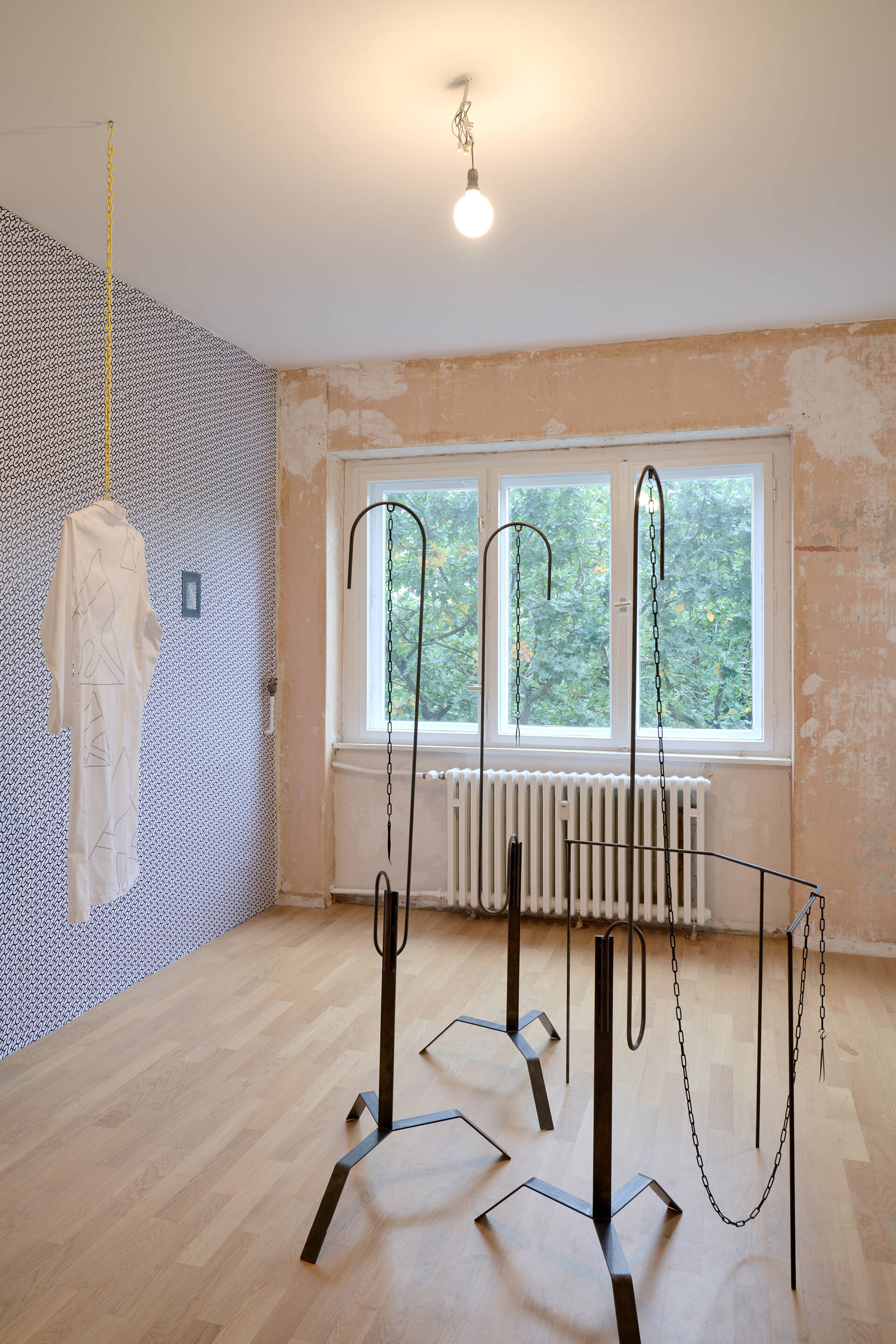
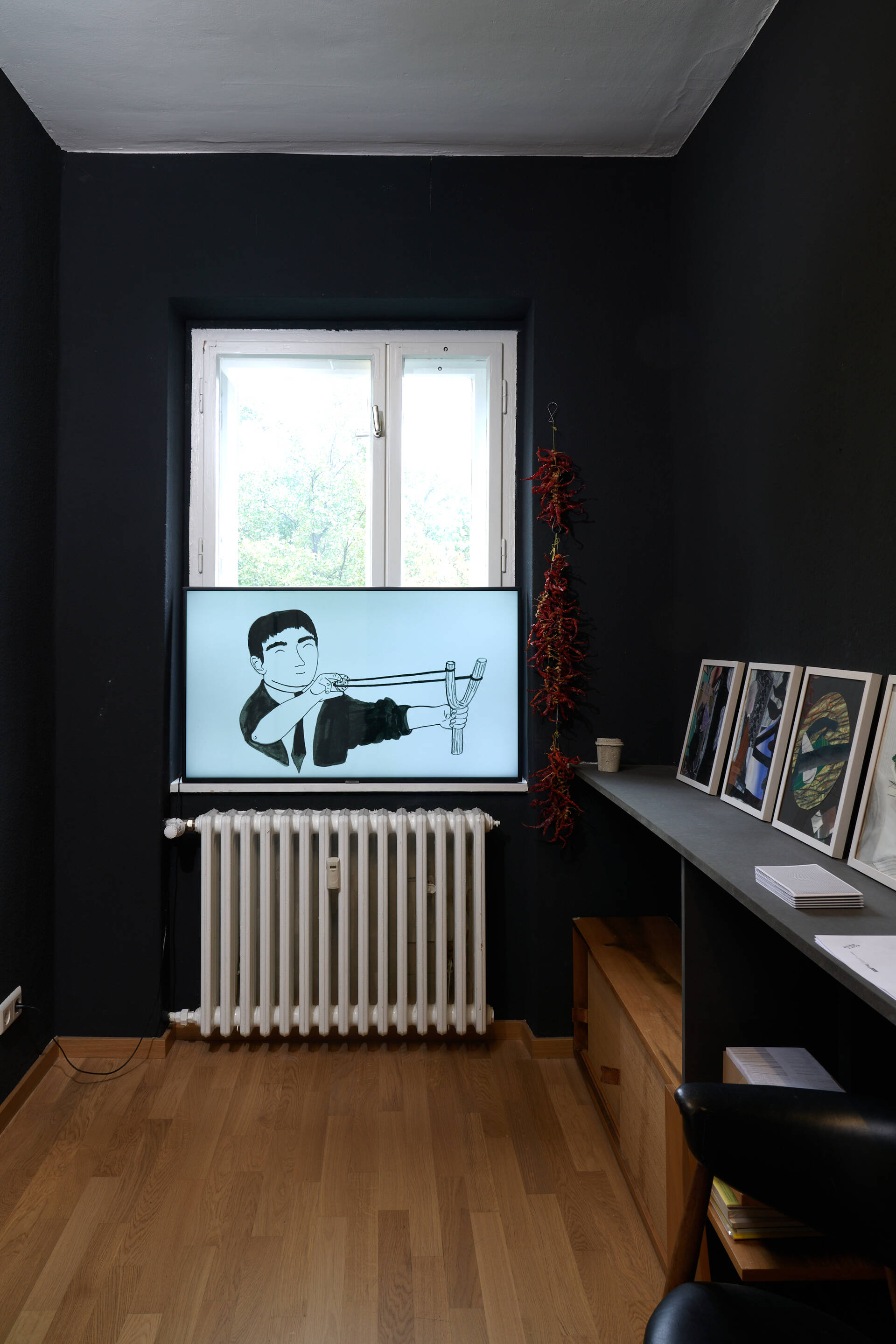

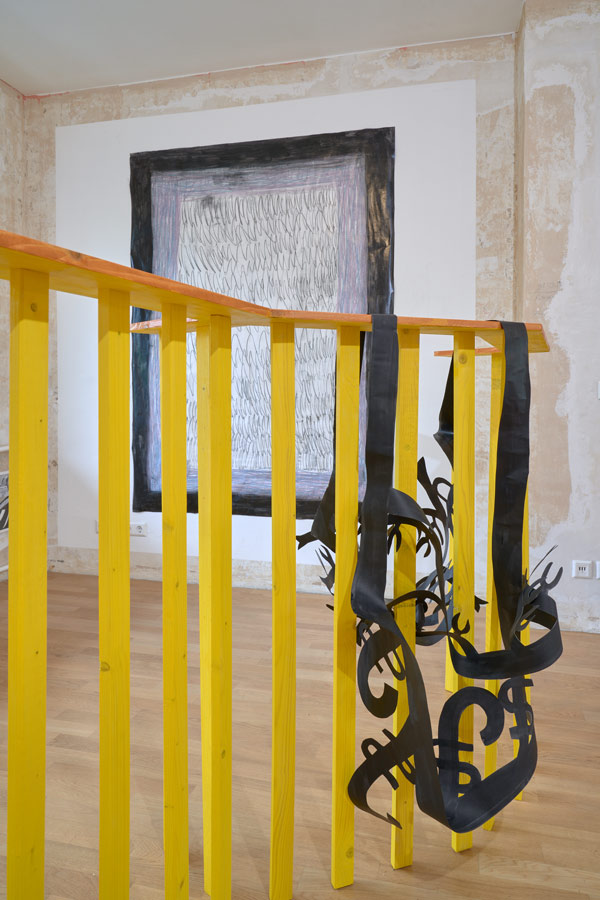
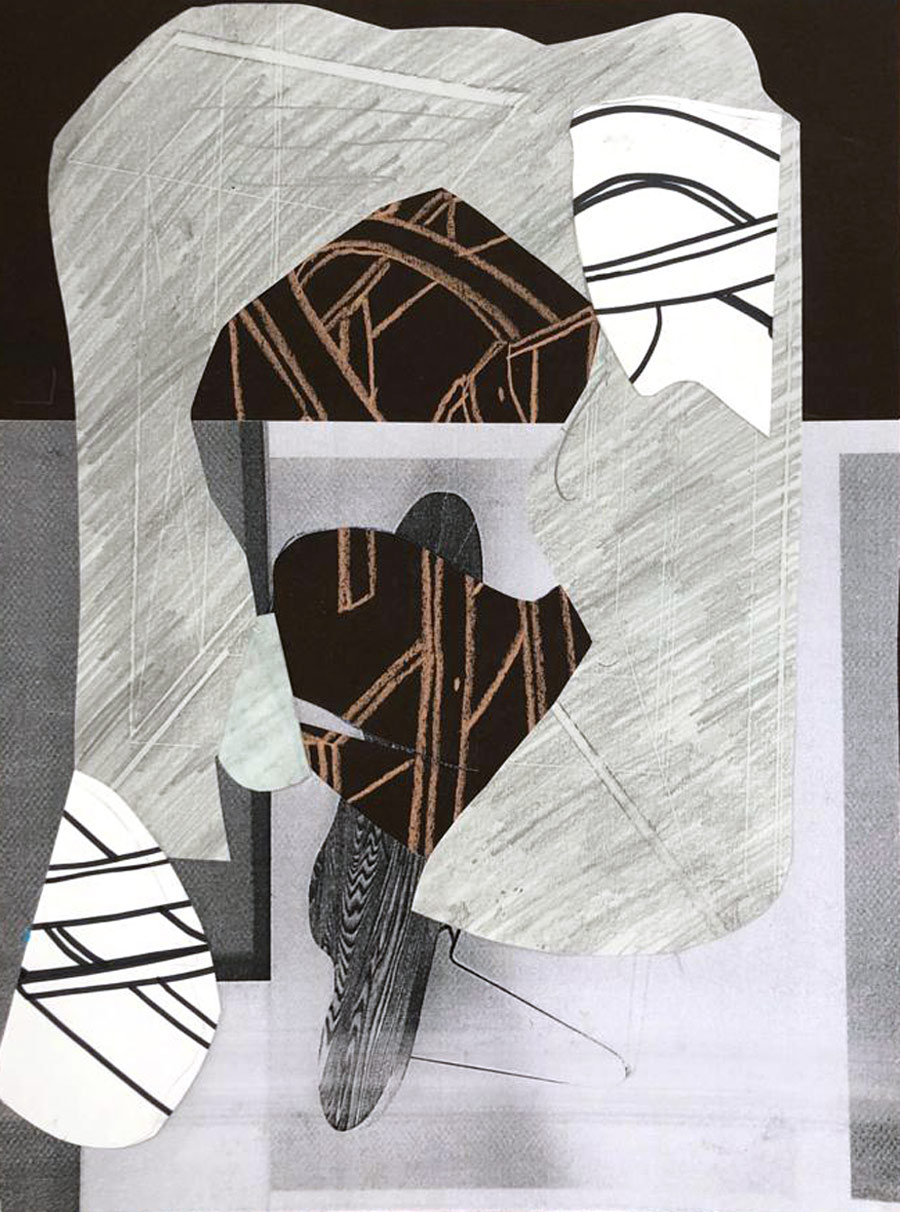

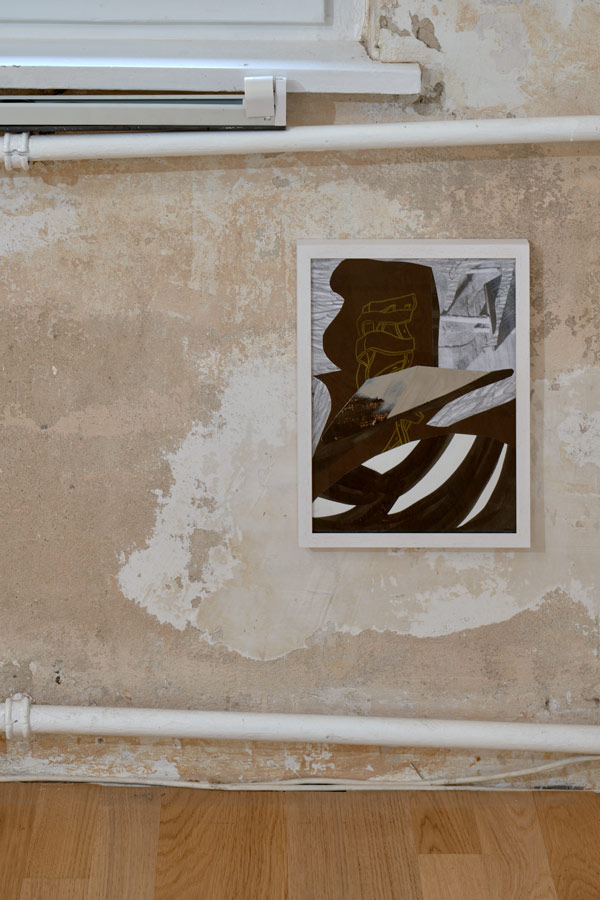































neues bauen 13629
Soloshow, Scharaun, Berlin-Siemensstadt
03. Oktober — 14. November 2020
Ausstellung : 03. Oktober - 14. November 2020
Öffnungszeiten: Samstags 12h - 18h
nur nach Vereinbarung unter info@scharaun.de
Scharaun Jungfernheideweg 4
13629 Berlin-Siemensstadt
U-Bhf Siemensdamm
info@scharaun.de
[EN] As the eldest daughter of Turkish immigrants, Ahu Dural grew up in Siemensstadt, a Berlin modernist factory housing estate. Through their hard work, her parents enabled her and her two sisters to receive training, study and social advancement. The artist's mother, for example, assembled microchips for Siemens appliances in the Wernerwerk XV chord. In reference to this, Ahu Dural takes the concept of the large housing estate at the time, "working, living, educating and relaxing" in the environment she grew familiar with, as a starting point for personal reflection. What relevance does the original idea of the "neues bauen" (new building) in an urban space like Siemensstadt have for then and now? What is and was for the artist the defining feature of Siemensstadt?
neues bauen 13629
In her solo show "neues bauen 13269", at Scharaun project space, Ahu Dural (Berlin, 1984) undertakes an artistic exploration of her childhood’s surroundings. The eldest daughter of Turkish immigrants, she grew up in Siemensstadt, the renowned Modernist Housing Estates in Berlin built during the 1910th for the employers of the Siemens factories. Combining her biography with the architectural functional elements of the district, the artist investigates the Modernist concept of "working, living, educating and relaxing" embedded in the environment she grew up in and takes it as a starting point for personal reflections.
Shapes, lines, colors and symbols of Siemensstadt repeat themselves throughout the exhibition. Some deconstructed details, such as photos and drawings of her Kindergarten or the prefabricated building where the artist lived with her family, appear transformed, reshaped and cut out in her sculptures and large-scale collages; others, like the early Siemens company logos, the sinuose letter S, or the horse-shaped seat she remembers from the playground of the settlement at Saatwinkler Damm, are incorporated in an abstract and graphic language to pictorial surfaces and furniture objects.
References to Siemens factories dominate the artworks, in the same way they dominate the memories of Dural’s childhood -her mother, Özler Dural, worked there from 1980 to 1995 as an assembler for printed circuit boards- and the architectural and social development of the district. The culture of repetitive manual work, which allowed Dural’s parents to give an education and social advancement to three daughters, is assimilated in the artist’s collages and sculptures exhibited at Scharaun: she engages physically with the artwork by incorporating repetitive gestures, movements and patterns typical from a factory labor to different materials and surfaces.
But it is especially a female perspective that continues to surface in "neues bauen 13629", Dural’s most personal exhibition until date. Many works allude to the female influences in her life, starting from her mother. 15 Years is a selection of analog pictures of Özler Dural at work in the Wernerwerk XV building during the 1980s. They capture birthdays, jubilees or retiring parties, those social events of a community for which, in time of no cellphones, one would have decided it was worth taking a picture on celluloid.
She is mostly surrounded by female colleagues, considered at the time to be more precise in accurate tasks such as the assembling of microchips. They are usually wearing a company working coat, from which a hand embroidered reinterpretation is to be found in the exhibition: the artist decided to create this unique textile piece while listening to her mother telling the stories behind the images of 15 Years, kind of “dressing”, this way, the narrator, and giving the textile piece a performative quality.
The artist remembers her mother’s productive energy -which seems to have been assimilated in her practice- and how it sparkled her interest in feminist critical theory, as well as in female architects and designers of the Modern and Postmodern Era. Several sculptures in the exhibition are tributes to female creatives such as Eileen Grey, Charlotte Perriand or Louise Bourgeois: one object, which resembles one of Grey's interior lamps, is almost transformed through Dural’s abstract reinterpretation into a two-dimensional object, reminding one of Grey’s ability to give a graphical dimension to her functional industrial designs.
Another work consists of an elegant bench made out of long wood pieces, which evoques Perriand’s Japanese style. Though in Durals version, the work acquires biographical elements, such as the strong orange-reddish color of Siemensstadt’s metropolitan station and Kindergarten benches. Flat pillows on top follow the shapes of the aerial perspective of the prefabricated edification in which the artist and her family lived for around 20 years. This same geometrical form, which Dural defines as “the shape of my subconscious”, appears in two other sculptural pieces: a functional white platter table, and a large-scale paravant which revisits in a joyful version Bourgeois’ The Blind Leading the Blind sculpture.
Reflecting on the building where she spent her formative years -mainly inhabited by families with migration background- the artist has decided to add her animation video, Anatolian Borders, to the exhibition, which focuses on her family’s place of origin.
In "neues bauen 13629", curated by Jaro Straub and located on the 3rd floor of an apartment block designed by modernist architect Hans Scharoun for Siemensstadt, Ahu Dural invites the visitors to explore her perception of Siemensstadt through artworks that, just like memories or dreams, blur the lines between functional objects and gestural-abstract images.
Text: Anna Garbus
Photos: Marlene Zoe Burz
Playground 129 (Shelf, Stool), Kırmızı* Johanna (*red in turkish) & Vage Rooms (Var. 18) Collage
1 & 2 Untitled & Playground 129 (Shelf, Stool, Sideboard, white Table)
3 15 years (Wernerwerk XV - Siemens) & 20 years (Moabit & Siemensstadt)
4 Bestückerin, Objet d‘Eileen (Bestückerinnen) & Wallpaper Siemens-Halske-Schuckert
5 Vage Rooms (Var. 18) Collage & Kırmızı* Johanna (*red in turkish)
6 Saatwinkler 129 (Counter/Roomdivider)
7 Anatolian Borders (Animationmovie, Stopmotion, 7min., 2014) & Series Vage Rooms (Var. 11-29) Collages
(...)










